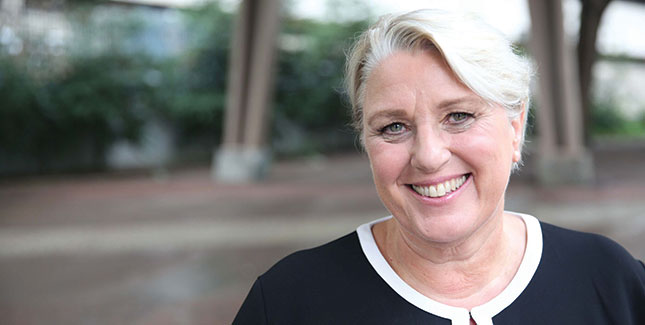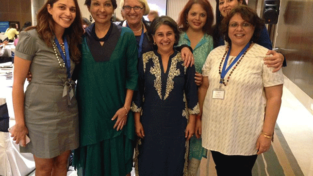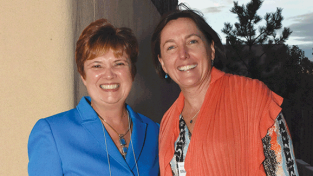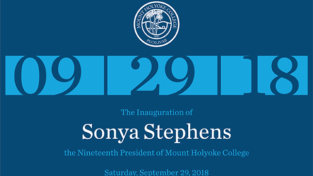President’s Pen: Fall 2017
It has been truly delightful over the last year to relive, in the pages of the Alumnae Quarterly, one hundred years of Mount Holyoke history, alumnae engagement, and forum for discussion. This celebration of the Quarterly has brought to the fore—as the class histories do in the Annual Meeting—the trove of memories, the views from and of the campus, and the common bond that connects the Mount Holyoke of 1917 to that of 2017 and to all of the classes in between. You may remember the words of editor Margaret Ball, class of 1900, who described the value and intentions of the Quarterly in the first issue in April 1917. She wrote:
This Quarterly makes its first appearance at a moment when every institution in the country must question its own reason for existence, must determine that it will contribute something of positive value to the life of the nation or will discontinue its own efforts in favor of some more essential activity.
There’s relevance in Ball’s statement to the contemporary moment, of course: a moment in which conflict, division, violence, and terrorism are calling upon the resources of each of us and of institutions to make sense of it all, to support free speech and civil discourse, and to defend the values of democracy and civil rights. It is a moment that is testing our understanding of conflict and of nation, of peace and of humanity.
Centenaries and other anniversaries are . . . opportunities for retrospectives and new perspectives. Sonya Stephens
Centenaries and other anniversaries are, like this one that celebrates the Quarterly, opportunities for retrospectives and new perspectives. Advocating for the value of education, and for Mount Holyoke in the landscape of higher education, Ball articulates the need for every college, in time of war, “to keep the habit of believing in education,” and the obligation “to strengthen and fulfill its own high purpose.” That theme returns through the decades of the Quarterly in the exploration and defense of the liberal arts and remains an important focus for us today. In a 1952 essay, excerpted as a part of this celebration, Professor Alan Van Keuren McGee wrote that “without offering vocational training, Mount Holyoke awakens the life in which the good vocations are found; without imposing philosophies, it shows what a sound philosophy is; without promising final answers, it finds what questions need answers.” This year, Vice President for Academic Affairs and Dean of Faculty Jon Western will support a number of faculty seminars focused on questioning and seeking to understand the contemporary moment, with opportunities for the community to hear from participants in roundtable events. This is the value of liberal learning, expressed through the agile scholarship of the faculty and offered in ways that serve to build intellectual community and human understanding in both time-honored and forward-thinking ways.
This retrospective also reminds us that Clapp Hall was, in 1922, a proposed new science building on the site of Williston Hall, destroyed by fire in 1917. Identified in the recent Facilities Master Plan as one of the College’s “highest and best use” buildings, Clapp continues to be home to the sciences, including an innovative robotics lab, the GeoProcessing Lab, and the departments of computer science and environmental studies, among others—a reminder that disciplines, technologies, and pedagogies evolve within these weathered halls. Similarly, Blanchard Hall has evolved from its early beginnings to be a newly renovated space for student life, leadership, and community, though vestiges of its past uses—including as the College’s gymnasium—have been incorporated into the decor. All of this is building community in the extraordinary ways that a residential college can. And, as we await the opening in the spring of the new centerpiece of our community and the top priority in our Facilities Master Plan—the $50 million Community Center with dining—we are reminded that we continue to build history and community at Mount Holyoke, and that our traditions remain even as they change.
I’d like to think that one hundred years from now, when the Quarterly is celebrating two hundred years, future master planners will be saying that the Community Center, too, is one of our highest and best use facilities, and that faculty, alumnae, and others will still be advocating for the free exchange of ideas, promoting the liberal arts, and celebrating what Mount Holyoke brings to the landscape of higher education.
This article appeared in the fall 2017 issue of the Alumnae Quarterly.
October 13, 2017











Leave a Reply